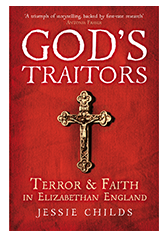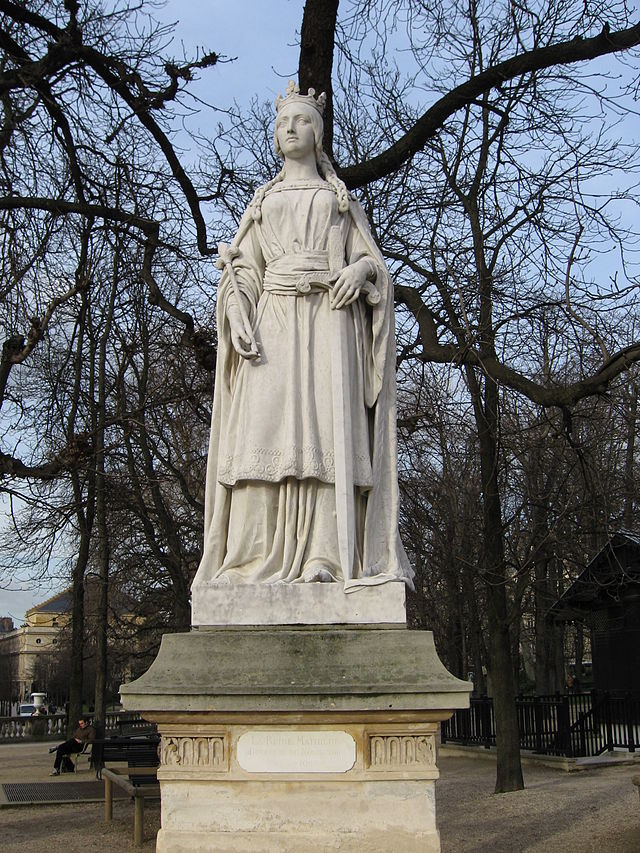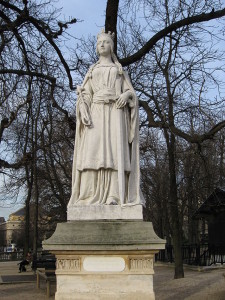
The last time that Giles Tremlett wrote a biography, it brought new life to the story of Katherine of Aragon, first consort to Henry VIII. Tremlett’s extensive use of Spanish archives and his obvious investigative and writing talents made for both enlightening and entertaining reading. This time, he turned his attention to a figure whose story is even more shrouded in myth and legend – Isabel of Castile- so this massive tome is as much about what Isabel did as much as what she didn’t do.
Generally, and this is speaking from my midwest American schooling experience both as a student and as a teacher in the classroom, Isabella was only taught as part of a dynamic duo – Isabella and Ferdinand. That duo was responsible for giving Christopher Columbus money and ships so he could sail and ‘discover’ the New World.
And… that was it. I don’t even remember talking about the Spanish Inquisition or anything related to Isabel y Fernando in K-12 aside from Christopher Columbus at all. We did a lot of American history (great men and wars, huzzah…) and did some Western Civ. in high school, so it is possible that my wonderful high school history teacher, Dot, did cover it and I just don’t remember it.
Regardless – most Americans aren’t going to get a grounding much better than mine in Isabella and Ferdinand’s contribution to history. This book, though, seeks to rectify that omission. Unabashedly intellectual while still eminently approachable, Tremlett masterfully walks the line between scholarly/academic and popular press-worthy. He elevates the art of biography – and I only hope that when I get to write a biography (it will happen! after the PhD. Eventually.) that it is half as good as Tremlett’s.
Most of the text is chronological, which makes complete and utter sense, but he brings us into the narrative at a key, highly dramatic, point and then pulls back to give context. He starts at Isabella’s coronation procession. In Castile, monarchs typically didn’t have the same sorts of coronation ceremonies as in other kingdoms. For Isabella, there was no Te Deum sung, no anointing by the highest churchman in the land, etc (In Castile, there was a coronation ceremony, but it typically happened in Toledo and there was anointing, but the actual crowning of the new monarch didn’t happen very often.). There was The Walk and the Sword.
The sight was shocking. Gutierre de Cardenas walked solemnly down the chilly, windswept streets of Segovia, the royal sword held firmly in from of him with its point towards the ground. Behind him came a new monarch, a twenty-three-year-old woman of short to middling height with light auburn hair and green-blue eyes whose air of authority was accentuated by the menace of Cardenas’s weapon. This was a symbol of royal power as potent as any crown or sceptre. Those who braved the thing, wintry air of Segovia to watch the procession knew that it signified the young woman’s determination to impart justice, and impose her will, through force. Isabella of Castile’s glittering jewels spoke of regal magnificence, while Cardenas’s sword threatened violence. Both indicated power and a willingness to exercise it.
Tremlett, Isabella of Castile, pg. 1
I love this snippet because not only is it the first paragraph of the whole book, it also gives you the significance of Isabella’s actions. Afterward, Tremlett gives a further introduction and brief overview of Isabella’s life and accomplishments and the difficulty of writing a biography of just one half of the dynamic duo as their lives, after marriage until her death, were lived jointly. They were medieval Spain’s power couple. Their marriage brought together the kingdoms of Castile and Aragon, as well as through their descendants, the Netherlands, the Holy Roman Empire, and much of the discovered lands in the New World. It was a heady inheritance – which began with Isabella’s choice of husband.
Tremlett continues to take us through Isabella’s life from her earliest days to her death in a balanced way. As much as you have to really put yourself into the shoes of the person you’re working on, Tremlett doesn’t shy away from Isabella’s horrific choices when it came to the Inquisition, the Reconquista, and the expulsion of the Jews. He explains why Isabella would have made those choices using, whenever possible, her own words. Through this, Isabella becomes a thoroughly complex individual who is torn, trying to honor her faith but having to do violent acts to do so. But, she does order those violent and cruel acts – which today seem beyond the pale, and (depending on which you’re talking about, there’s plenty to choose from) were somewhat iffy in her lifetime too.
But she did what she set out to do – she united Hispania under one monarchy and spread her Christian faith. She did so through her own military and political campaigns, through the counsel of her confessors, in partnership with her husband, and through marrying her children off in foreign dynastic matches. Even though she and Ferdinand had 5 children who lived until adulthood, at Isabella’s death, only three of her children still survived, Juana, Maria, and Catalina. She had to endure heartache with the deaths of her eldest daughter, Isabella, in childbirth, when her son, Juan, contracted illness and expired quickly after his marriage, and when her beloved grandson (Isabella the younger’s son), died just before his second birthday. But as Tremlett reminds his readers…
“It would be wrong to take pity on her, though, for Isabella did not view life in terms of self-fulfillment or the quest for personal satisfaction. Of all the current measures of success, the only one she would have recognised would be the quest for fame- which she certainly achieved. Apart from that, hers was a world of duty, obedience and fear of God. That explains why, in her final days, she did not fret about the obvious cruelty of expelling the Jews, forcibly converting the Muslims or torturing the conversos. The aims – of pursuing heresy and purifying Castile- were clearly ones that her God must approve of.”
Tremlett, Isabella of Castile, 486.
This book is great for anyone from the armchair historian to the serious academic. It’s filled with wonderful sources and stories from Isabella’s life and times. For anyone interested in American history, European history, or the lives of powerful figures, this would be a fantastic addition to your library.
Have you read it? What did you think? Leave your comments below or tweet with the hashtag, #tuesdayreviewday.



